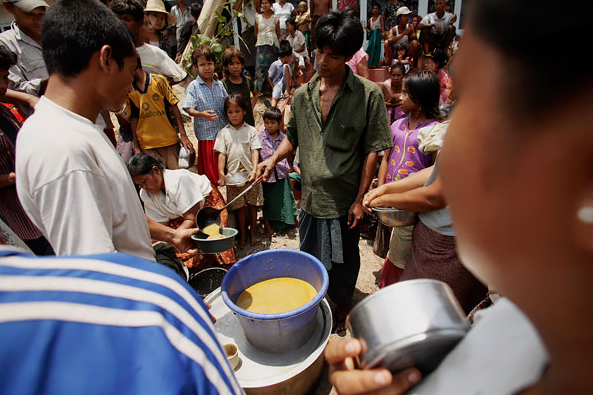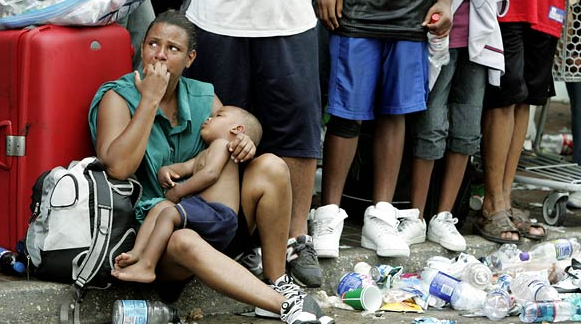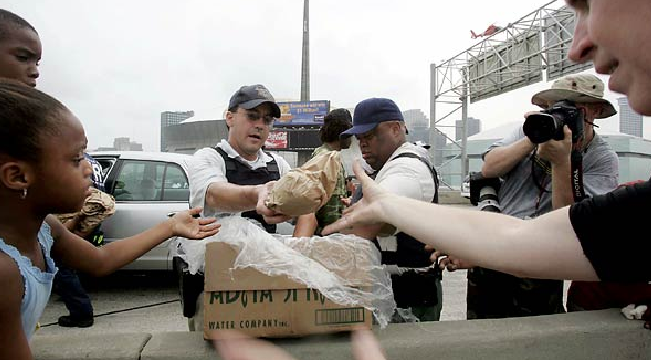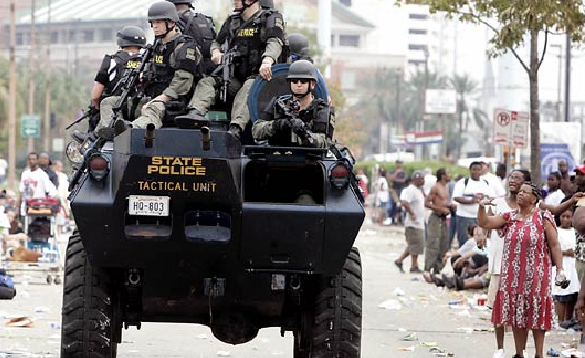Photojournalism about natural disasters has always served a political purpose, which is why authoritarian governments censor it as much as anything else. US coverage of foreign disasters has at least two themes: first, demonstrating our magnanimity and the wealth; second, suggesting that authoritarian governments are incapable of helping their own people. Frankly, I’ve always liked the second half of this story: it’s good to be reminded that democracy, though not perfect, still works better than non-democratic regimes. Apologists for dictatorship rely on the conventional wisdom that dictators are more efficient than democracies. That overlaps with other hierarchies as well and so it seems natural to think that you can make the trains run on time by keeping decisions in the executive suite.
So it is that I don’t mind seeing Myanmar exposed for what it is, a brutal, incompetent regime whose only priority is holding on to power. When coupled with the many reports of that government’s control–and theft-of international relief, photographs such as this one speak volumes:
The government is not in sight, and people seem to be making do with whatever they were able to scrounge or share. The New York Times caption included the report that “Nearly one week after a devastating cyclone, supplies into the country were still being delayed and aid experts were being turned back as they arrived at the airport.” Look again at the one pan of food, then at the children waiting to be fed, and do the math. There is not going to be enough to go around.
Because of my commitment to democracy, I don’t mind this political message being added to the reportage. For that very reason, however, coverage of the earthquake in China should be seen as a genuine challenge to American complacency. Despite staggering levels of destruction and enormous difficulties due to terrain, weather, the remoteness of the region, and wreaked infrastructure, the response of the Chinese governments at all levels has been superb. From local first responders to mobilization of medical personnel on a large scale to sending in 100,000 troops, the scale, coordination, and competence has been obvious. In addition, you might also note the high levels of modernization and affluence. The heavy equipment, medical supplies, temporary shelters, equipment, clothing, and more are first rate.
There are dozens of photographs supporting this story, including this one:
Civilians are being helped around a mechanical hoe that is being used to clear a mountain road. That late model Volvo probably wasn’t airlifted in. As the refugees are helped out, fully laden and unarmed troops march in to the disaster area. People seem to know what they are doing.
Initial coverage in the US included criticism of Chinese restrictions on media coverage. When those restrictions were quickly ignored by the Chinese themselves and then lifted by the government, the criticism ended for the simple reason that there was nothing left to fault.
And so we get to Katrina. Although the response to that disaster may have been better than that of the despot in Myanmar, it nonetheless was terrible. Nor could the US claim that it was in a remote region or that vital infrastructure had been destroyed–Interstate highways went right to the door and the port remained open. So let’s take a moment to recall how things looked on the fourth day after the flood:
And the food? Peanut butter sandwiches:
And the troops?
None of this is the full story. There were differences that have not been mentioned. Visual evidence, like any evidence, should treated with some skepticism. But, still. US or China: which scene looks more like a third world society–and a third world government?
Photographs by Chumsak Kanoknan/Getty Images; Du Bin/New York Times; Eric Gay/Associated Press; James Nielson/AFP-Getty Images; Eric Gay/Associated Press.





[…] the photo journalism blog “No Caption Needed” added Katrina and New Orleans to the equation and asked this: None of this is the full story. There were differences that have not been […]
One thing that marks the US scenes: the trash composed of goods of manufactured origin.
[…] previously about the photojournalism coming out of China with regards to the recent earthquake, noting the powerful images of a government mobilized to help its people in times of need. And as the […]
online photographer…
Good work, but with some challengeable content; your effort and passion really shows on your site. You get a bookmark for follow-up, and I enthusiastically recommend to others!…
[…] resources to respond to crisis situations with some dispatch. We have seen it before (here and here). And whatever we might find objectionable in China’s commitment to human rights—and […]